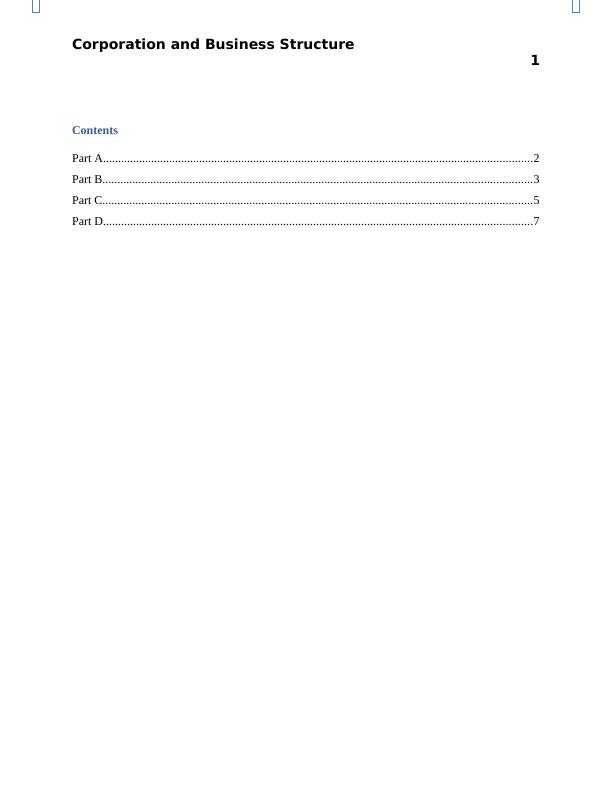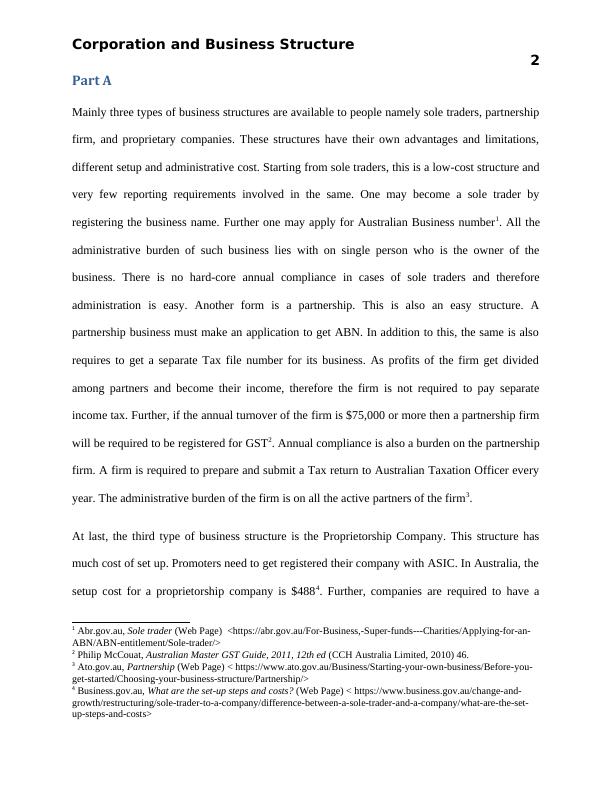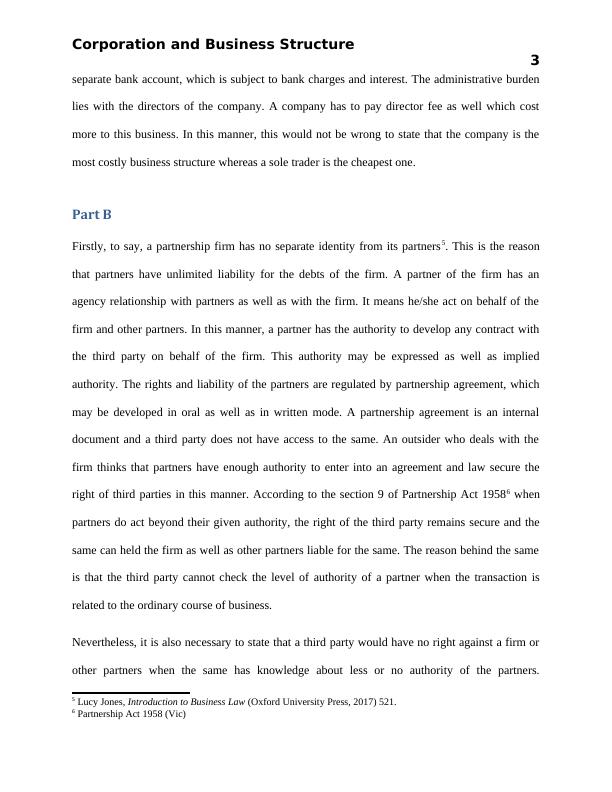Corporations and Business Structure
Assignment for the course LAWS20059 – CORPORATIONS and BUSINESS STRUCTURES, to be submitted online via Moodle in doc or docx format by 11.45pm, Thursday 25 April 2019. Word limits and referencing requirements are provided. Extensions will only be considered under specific circumstances.
13 Pages3732 Words97 Views
Added on 2023-01-17
About This Document
This article discusses the different types of business structures, including sole traders, partnership firms, and proprietary companies. It explores the advantages and limitations of each structure and the administrative burdens involved. The article also delves into the duties of partners in a partnership firm and directors in a company, highlighting their responsibilities and liabilities. Overall, it provides a comprehensive overview of corporations and business structure.
Corporations and Business Structure
Assignment for the course LAWS20059 – CORPORATIONS and BUSINESS STRUCTURES, to be submitted online via Moodle in doc or docx format by 11.45pm, Thursday 25 April 2019. Word limits and referencing requirements are provided. Extensions will only be considered under specific circumstances.
Added on 2023-01-17
ShareRelated Documents
End of preview
Want to access all the pages? Upload your documents or become a member.
Corporations and Business Structures
|6
|2102
|41
BUSINESS AND CORPORATION LAW.
|10
|2673
|98
Costs of Business Structures
|7
|2189
|85
Company and Association Law
|12
|2959
|24
Corporation and Business Structure
|8
|2352
|58
Corporations and Business Structures
|8
|2430
|49




